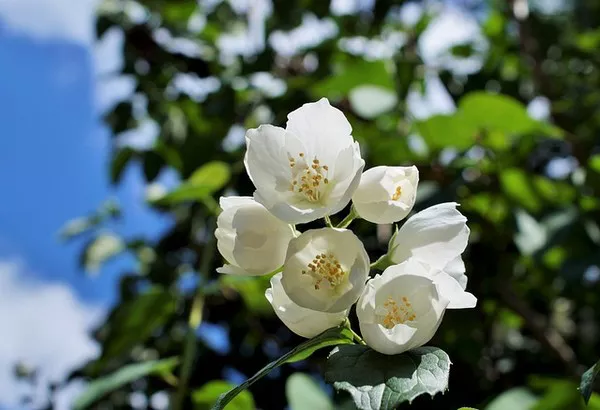Flowers have been cherished throughout history for their beauty, fragrance, and symbolism. Whether you receive a vibrant bouquet for a special occasion or pick fresh blooms from your garden, you might wonder how long these floral wonders can be enjoyed before they start to fade. Understanding the lifespan of flowers and how to extend their beauty is essential for both floral enthusiasts and those looking to make the most of their floral investments.
The Natural Lifecycle of Flowers
To comprehend how long flowers remain fresh, it’s crucial to recognize the natural lifecycle of these delicate wonders. A flower’s journey begins when it is in full bloom, showcasing its vibrant colors and fragrant aroma. This is the stage where they are most beautiful and appealing to us.
Over time, however, flowers start to undergo changes. As soon as they are cut or plucked, they begin to lose water and essential nutrients. This dehydration is the primary reason flowers wilt and lose their freshness. Additionally, exposure to light, heat, and microorganisms can further accelerate their deterioration.
Factors Affecting the Longevity of Flowers
Several factors influence how long flowers stay fresh:
Flower Type: Different types of flowers have varying lifespans. Some varieties, like roses, carnations, and chrysanthemums, tend to last longer than more delicate blooms like tulips or lilies.
Freshness at Purchase: The condition of the flowers at the time of purchase or harvesting plays a significant role in determining their longevity. Fresher flowers have a longer lifespan.
Temperature: Flowers are sensitive to temperature extremes. Extreme heat can cause wilting, while extreme cold can damage the delicate cells in the stems and petals.
Water Quality: Flowers rely on water for nourishment and hydration. Using clean, fresh water and changing it regularly can help prolong their freshness.
Water Quantity: Ensuring that the stems are submerged in enough water is essential. If the stems are exposed to air, they can become dehydrated and wilt more quickly.
Trimming Stems: Cutting the stems at an angle and removing any excess leaves below the waterline can improve water absorption and extend the life of your flowers.
Flower Food: Many floral arrangements come with packets of flower food that contain nutrients and antimicrobial agents. Using these can help maintain the flowers’ freshness.
Humidity Levels: Keeping the environment humid can slow down the dehydration process, helping your flowers stay fresh for longer.
Air Circulation: Adequate air circulation can prevent the buildup of ethylene gas, which accelerates the aging of flowers. Avoid placing them near ripening fruits or in stuffy rooms.
Light Exposure: Too much direct sunlight can lead to wilting, color fading, and shortened lifespans for flowers. Keep them in a cool, shaded spot.
How Long Do Common Flowers Last?
Each type of flower has its unique lifespan. Here are some general guidelines on how long you can expect common flowers to remain fresh:
Roses: With proper care, roses can last anywhere from 5 to 12 days.
Carnations: Carnations have a relatively long lifespan and can stay fresh for 7 to 14 days.
Chrysanthemums: These hardy flowers can last up to 14 days or even longer.
Lilies: Asiatic lilies typically last 5 to 10 days, while Oriental lilies can endure for 7 to 12 days.
Tulips: Tulips have a shorter lifespan, usually lasting about 3 to 7 days.
Daisies: With good care, daisies can remain fresh for 4 to 7 days.
Sunflowers: Sunflowers have a moderate lifespan of 7 to 10 days.
Orchids: Orchids can be long-lasting, often maintaining their beauty for 2 to 3 weeks.
Alstroemeria: Also known as Peruvian lilies, these flowers can last up to 14 days.
Hydrangeas: Hydrangeas have a shorter lifespan, typically lasting 5 to 10 days.
Extending the Life of Your Flowers
While the natural lifespan of flowers varies, there are several steps you can take to extend their freshness and enjoy their beauty for as long as possible:
Fresh Cut: Trim the stems at an angle and remove any leaves that will be submerged in water.
Clean Vase: Use a clean vase and fresh, room-temperature water. Change the water every 2-3 days.
Flower Food: If provided, use the flower food packets included with your bouquet.
Proper Placement: Keep flowers away from direct sunlight, drafts, and ripening fruit.
Humidity: Maintain a slightly humid environment, but avoid excessive moisture that can promote mold growth.
Air Circulation: Ensure there is enough air circulation to prevent ethylene gas buildup.
Rehydrate: If flowers start to wilt, you can try submerging the whole bouquet in water for a few hours to rehydrate them.
Prune: Remove any wilted or dead blooms as soon as you notice them to prevent the spread of decay.
Conclusion
The lifespan of flowers varies based on several factors, including the flower type, care, and environmental conditions. By understanding these factors and implementing proper care techniques, you can extend the beauty and freshness of your floral arrangements. Whether you receive flowers as a gift or cultivate your garden, taking the time to care for them can ensure that their beauty lasts as long as possible, allowing you to enjoy their splendor for days, if not weeks, on end.


